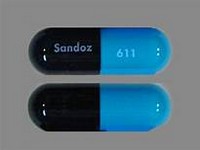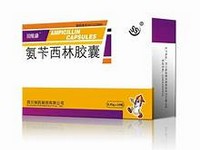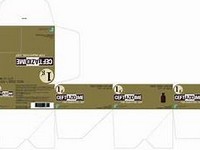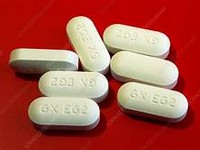sodium clodronate
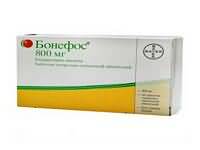
CLINICAL USE
Bisphosphonate:(1) Management of osteolytic lesions, hypercalcaemia and bone pain associated with skeletal metastases in patients with breast cancer or multiple myeloma(2) Hypercalcaemia of malignancyDOSE IN NORMAL RENAL FUNCTION
(1) Oral: 1.6–3.2 g daily in single or 2 divided doses Loron-520: 2–4 tablets daily(2) SlowIV infusion
: 300 mg daily for 7–10 days or a single dose infusion of 1.5 gPHARMACOKINETICS
DOSE IN RENAL IMPAIRMENT
GFR (mL/MIN)
30–50 Dose as in normal renal function 10–30 50% of normal doseDOSE IN PATIENTS UNDERGOING RENAL REPLACEMENT THERAPIES
IMPORTANT DRUG INTERACTIONS
Potentially hazardous interactions with other drugsADMINISTRATION
Reconstition
–Route
Oral,IV infusion
Rate of Administration
(1) Single infusion: 1500 mg over 4 hours (2) Multiple infusions: 300 mg over at least 2 hoursComments
(1) Single infusion: 1500 mg sodium clodronate to 500 mL sodium chloride 0.9% or glucose 5%(2) Multiple infusions: 300 mg sodium clodronate to 500 mL sodium chloride 0.9% or glucose 5%Multiple infusions should be repeated on successive days until normocalcaemia is achieved or to a maximum of 7–10 daysWhichever method of infusion is employed, most patients will achieve normocalcaemia within 5 daysOTHER INFORMATION
Renal failure has been associated with IV use of bisphosphonates. Smaller doses (up to 300 mg daily) over 2–3 hours are less likely to be associated with renal impairment than high doses by short IV infusionReversible elevations of creatinine have been reported. Renal function should be monitored during treatmentOrally: avoid food for one hour before and after treatment, particularly calcium-containing products; also avoid iron, mineral supplements and antacids
See how to identify renal failure stages according to GFR calculation
See how to diagnose irreversible renal disease
Home

